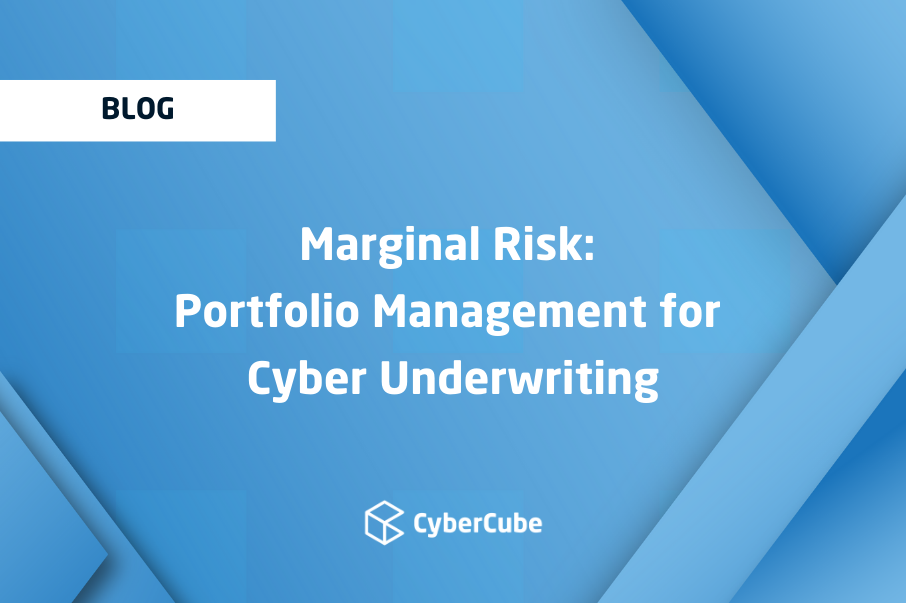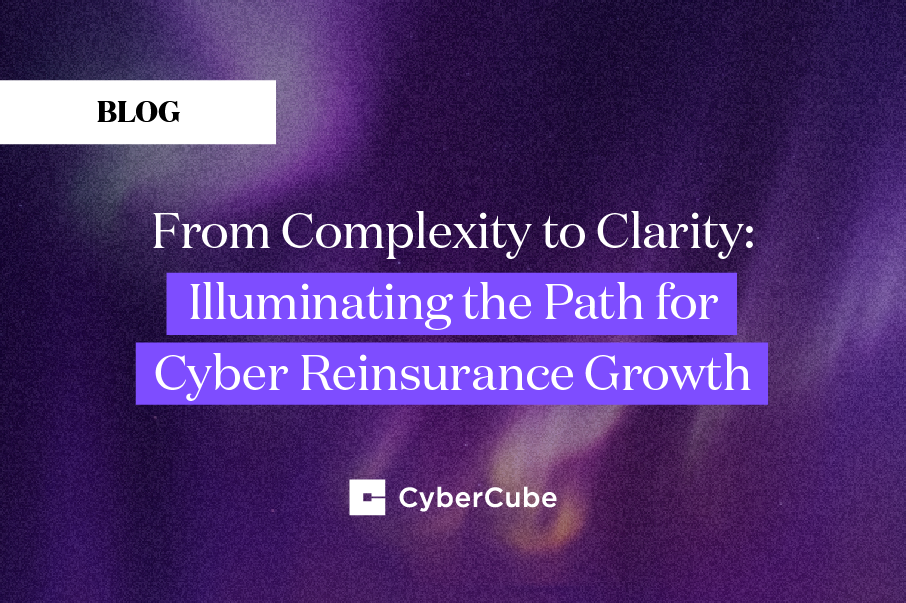It is the dawn of a new era for the cyber insurance industry; an era where underwriting and portfolio management speak the same language and visualize the same guiding metrics that define both the underwriting strategy and portfolio optimization at the point of underwriting.
In this new era, there is a paradigm shift in doing business. Underwriting teams will have the ability to quantify and understand the exposure and tail risk impact an individual account has on the portfolio, understand how well diversified a risk is, and understand the necessary return on capital that needs to be met to support the risk, all before the risk is bound. Put another way, teams are able to focus on proactive portfolio construction vs. reactive portfolio optimization, with zero additional cross-functional workload.
How is this possible?
The answer is in CyberCube’s Marginal Risk.
Marginal Risk is CyberCube’s feature for CyberCube clients that license its Portfolio Manager and Account Manager solutions and enables this new way to underwrite. In this blog, we’ll cover everything you need to know about Marginal Risk and how it can help underwriting teams and portfolio management teams proactively improve their risk decision making. Here, we'll detail what Marginal Risk is and how it can help cyber underwriters adapt their approach to underwriting.
The value Marginal Risk delivers
In its simplest form, Marginal Risk is a method of understanding the impact an account or group of accounts has on a wider portfolio. It is a concept well familiar to more established markets like property (re)insurance at large, but has yet to make its way to retail Cyber Insurance. In those markets, underwriters are looking at Marginal Risk metrics to make decisions on accounts and support efficient and resilient portfolio construction.
How Marginal Risk works
For single risk underwriting, CyberCube’s Marginal Risk feature delivers a quantified loss analysis of both an individual account and a portfolio together. In doing so, underwriters generate a new combined view of risk for the hypothetical combined portfolio that contemplates this prospective risk, and its associated exposure and tail losses. The difference between the newly combined portfolio’s exposure and tail metrics, and the original portfolio’s exposure and tail metrics is the net impact of adding an account to the portfolio — the Marginal Risk.
Let’s ground this in an example. Imagine your team is responsible for a portfolio of large US risks each with over $1B of annual revenue/turnover. You’re considering adding another large retailer to the portfolio. In today’s market, with your current method of doing business, you would look at individual risk attributes and external factors, such as:
- Various exposure metrics like the nature of operations, the size of the company, its networks, the number of employees and records, etc.
- Various security metrics gathered from an application, conversations/meetings with the prospective insured, and perhaps even analytical measurements from a third-party scanning vendor, etc.
- Individual account pricing, coverage terms and conditions, exclusions, etc.
- Business factors such as the relationship on the account, other lines of business underwritten, etc.
What you’re missing, however, is a method of understanding how well this individual large retailer would fit into the broader portfolio, and what impact it would have.
Understanding an account’s impact on the portfolio
As an individual underwriter, you are likely unaware of the specific aggregations that exist within the overall portfolio for certain industries, certain digital supply chain dependencies, or other technological dependencies (at least not en masse). Not knowing this broader impact forces your portfolio management team to make reactionary portfolio adjustment decisions several months or quarters down the line, ranging from non-renewing certain parts of the portfolio, rate hike strategies and increased reinsurance purchasing, to pulling out of specific market segments. These reactionary measures can put you in a precarious position where you have to have to defend the new strategy, with little understanding of how your portfolio ended up there. This can impact your relationships with your brokers and trading partners, who lose confidence in your ability as an underwriter to be a sustainable market for them to place business.
All of this cyclical tension can be eased in the new era of Marginal Risk for cyber underwriting.
With Marginal Risk, teams can set guidelines, thresholds, and pricing rules around:
- North Star tail metrics
- Example: the 1-in-200 AEP
- Tail Diversification measurements
- Example: how diversified an account is among your portfolio’s digital supply chain aggregations and SPoFs
- Return on risk capital thresholds
- Example: the rate of return achieved deploying capital on a risk for a given premium vs. the rate of return achieved by investing the capital in the market
- CAT Loads
- Example: how much additional capital (and associated premium) you need to have on hand to support the increased tail exposure to the portfolio, with this specific risk
Deploying appropriate data-driven solutions
As the cyber insurance space evolves, it is crucial that insurers are able to adapt. Having the appropriate tools that enable easy decision-making on accounts as well as efficient portfolio construction is key.
Account Manager is CyberCube’s dedicated single-risk underwriting platform built by experts in insurance, cyber security, data science and actuarial science, which helps insurers make data-driven decisions without interrupting an underwriter’s workflow. CyberCube’s Portfolio Manager is a fully probabilistic and scenario-based solution that helps (re)insurers establish their own view of risk. While both platforms excel independently, when combined they enable smooth underwriting through portfolio management decision making, including the ability to measure marginal risk and improve the insurer workflow across functions.
CyberCube’s Marginal Risk feature can enhance these solutions and is available today. Additional support packages can be provided to help draft, define, and implement your own Marginal Risk strategy based on your unique risk tolerance.
In the next blog in this Marginal Risk series, we’ll cover how insurers can set new underwriting thresholds in order to manage their exposure and tail risk as part of a joint underwriting-exposure management strategy.




